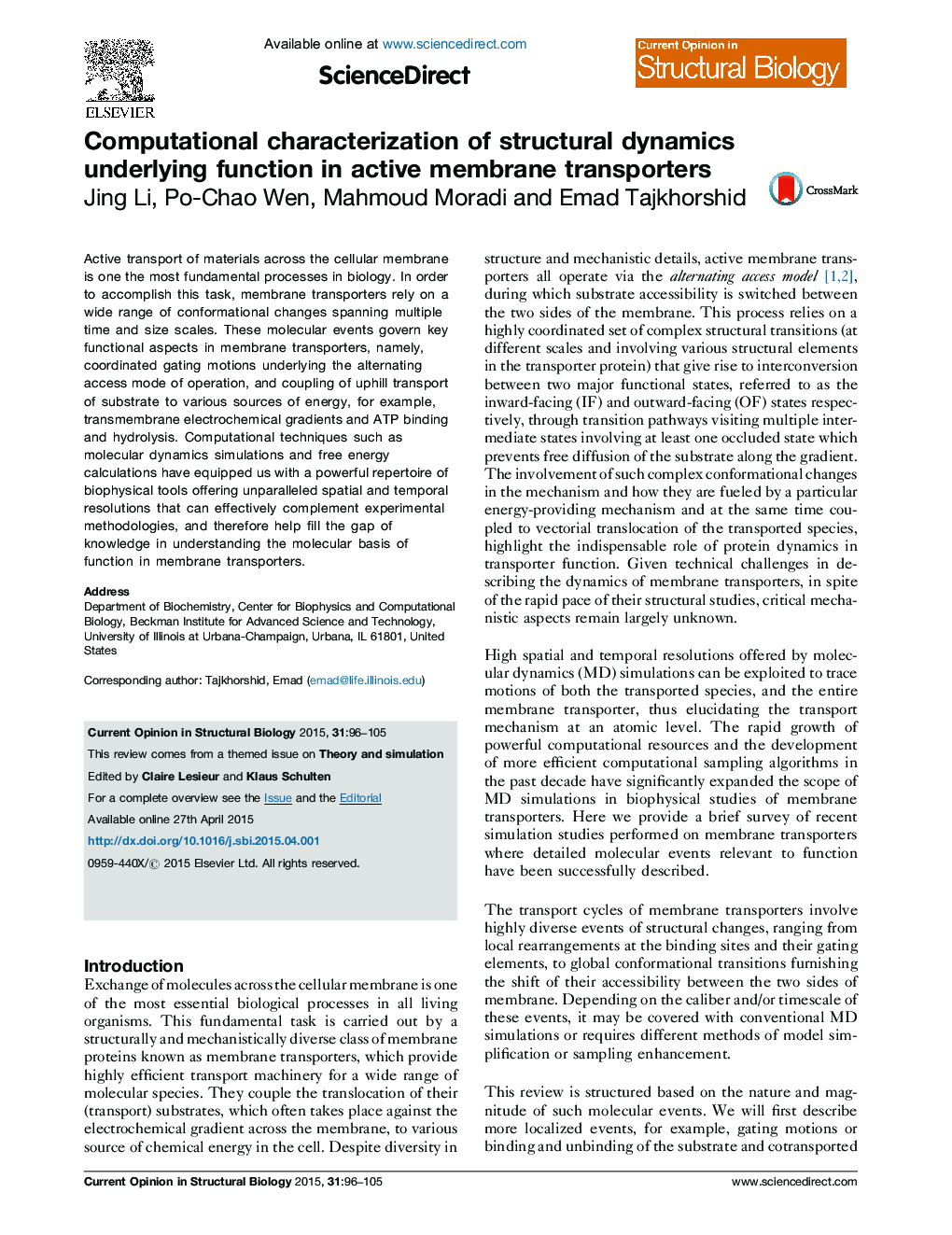| Article ID | Journal | Published Year | Pages | File Type |
|---|---|---|---|---|
| 1979035 | Current Opinion in Structural Biology | 2015 | 10 Pages |
•Membrane transporters rely on diverse conformational transitions for their function.•Advanced computational techniques successfully describe membrane transporter dynamics.•Major molecular events and processes described by simulation studies are discussed.•Energetics of various steps involved in transport can be described computationally.
Active transport of materials across the cellular membrane is one the most fundamental processes in biology. In order to accomplish this task, membrane transporters rely on a wide range of conformational changes spanning multiple time and size scales. These molecular events govern key functional aspects in membrane transporters, namely, coordinated gating motions underlying the alternating access mode of operation, and coupling of uphill transport of substrate to various sources of energy, for example, transmembrane electrochemical gradients and ATP binding and hydrolysis. Computational techniques such as molecular dynamics simulations and free energy calculations have equipped us with a powerful repertoire of biophysical tools offering unparalleled spatial and temporal resolutions that can effectively complement experimental methodologies, and therefore help fill the gap of knowledge in understanding the molecular basis of function in membrane transporters.
